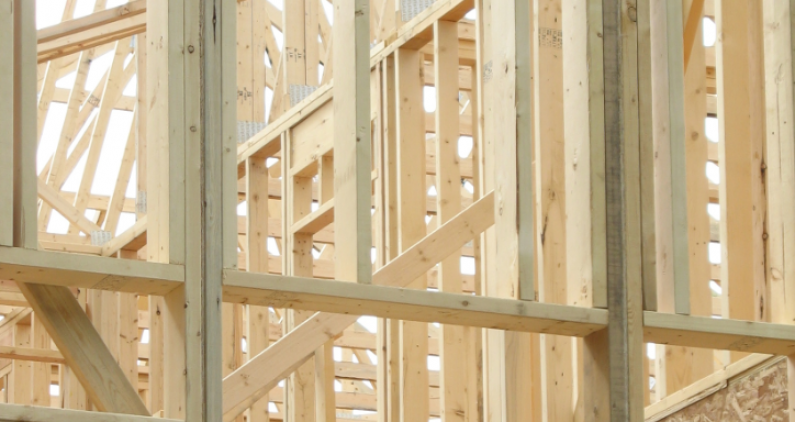Are hollow walls past their used by date?

Firstly what do we mean by hollow-wall construction?
We’re talking about the classic and currently ubiquitous way in which the vast majority of residential dwellings are being constructed. Timber framed with fibreglass insulation. Or as some enlightened individuals say: sticks and fluff. When you construct a dwelling with a framework of timber, fill the gaps with fibreglass bats and cover it up with plasterboard you’ve created the classic “Hollow-Wall”. Fantastic.
Or are they?
To assess just how good or otherwise the hollow-wall is we need to look at the role of the humble wall in the purpose of a building. Why do we have walls, and what are they really doing?

Wind back the clock to when our distant ancestors found themselves out in the cold, facing the elements and creatures of the wild wondering how safe they would be when they bedded down for the night in the open. Someone quickly must have worked out that if you put something between yourself and the things you were worried about you’d sleep better and get more done the next day. Drum roll please, announce the first wall. Some sleep was back on the agenda and productivity soared. That is until it rained (more on roofs later). So were they trying to create some sort of haven? You’ve got it. Let’s call the concept of creating a haven from the outside world “environment separation”.
Early walls were draughty affairs; a few sticks, a bit of mud and some flax cords and you were in business. Thankfully our ancestors were pretty smart people and soon figured out that (together with a roof) the better your walls were the more well-rested you were when tomorrow arrived. Or using our new term, improving environment separation increased productivity.
Fast forward a few years to the arrival of the people in that small but stunningly beautiful island out in the Pacific ocean called New Zealand. Our ancestors arrived and got straight to work, doing exactly what ancestors do best, creating our heritage. That meant houses so they got to work cutting down the forests, milling up the timber (conveniently ignore the 65% waste timber discarded to get the 35% sawn lumber for housing) and building themselves houses. Hollow-wall stick-framed houses popped up everywhere and the country got itself underway.
By the 1950’s and after many cold winters and bouts of pneumonia someone ventured to speak up and state the obvious. “Our houses are cold”. A wave of agreement swept the nation and a stop-gap solution arrived in the form of fibreglass insulation. Nice. We carried on building just the way we were and our houses got warmer. At that point innovation stopped.
There comes a time when the old makes way for the new, better solutions are created for our problems, and as a group we advance a step ahead. Think of cars vs horses, jet travel vs ships, smartphones vs dumbphones, we believe now is such a time for residential construction. In much the same way as it dawned on our forebears that there was a better solution to uninsulated houses we’ve realised that the old hollow wall has met its match. By making much better use of resources (100% of the tree is used in OSB) and combining it with modern technologies we can now produce a wall that takes environment separation to a completely new level. Meet SIPs – solid walls of construction sheathing either side of S-grade flame-retardant EPS laminated under high pressure to create a simple but truly remarkable solution. Massive structural strength, impregnable to many objects that would sail through a hollow-wall, hugely insulated, airtight and very precisely made the SIP outdoes the hollow wall in every area. Energy savings? Hell yes.
And how good would your environment separation be if you supplemented your new high performance walls with a high performance roof to complete the building envelope? Formance SIPs represent cutting edge technology that’s exposing the short-comings of hollow walls. If SIP technology is now available in NZ, has been granted the Government’s CodeMark stamp of approval, is being used across the country, and a growing number of perceptive New Zealanders are already enjoying the effortless ambience of SIPs why wouldn’t you?






